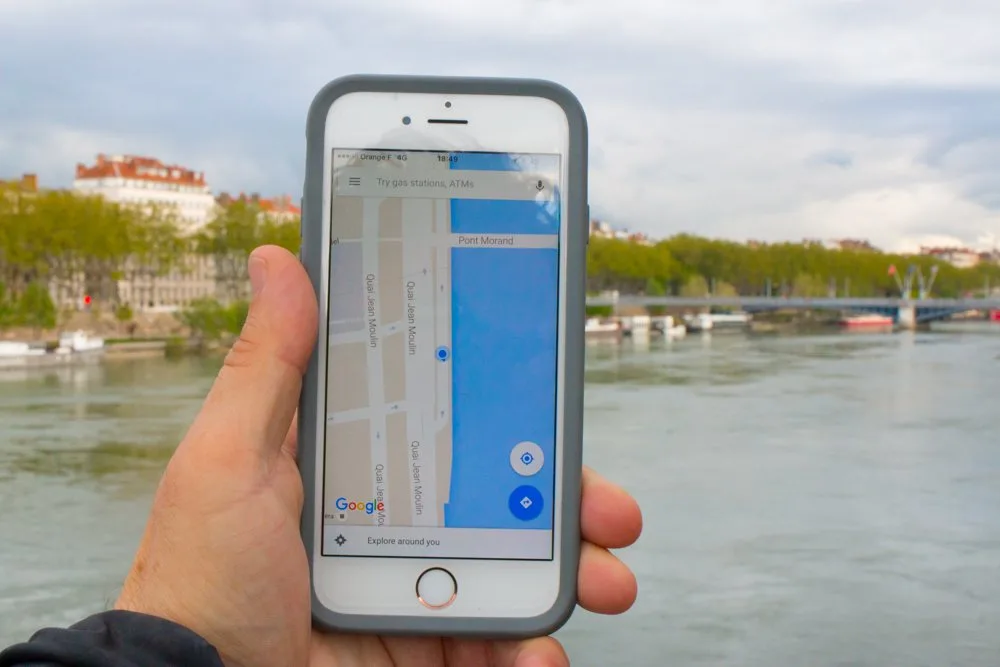As awesome as food travel can be, it’s not fun when travelers’ diarrhea rears its ugly head. Read on to find our best tips for travelers’ diarrhea prevention and how to deal with it when it happens.
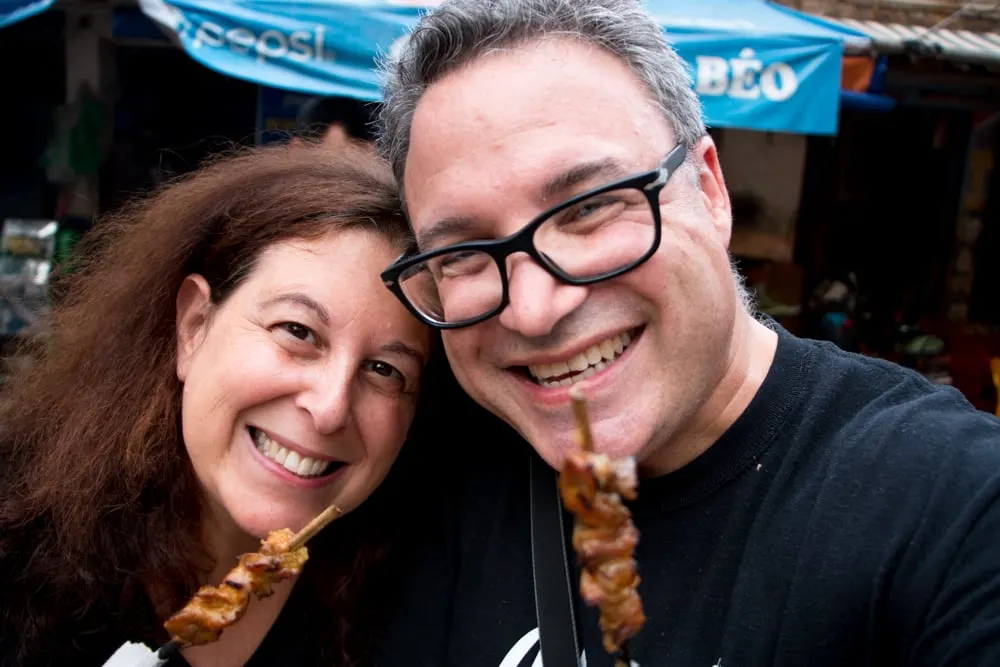
Let’s cut to the chase – getting sick on the road is a bummer.
As full-time food travelers who have been on the road for three years, we’ve had our fair share of stomach distress in countries as varied as Mexico, Vietnam, India and even developed countries like France and Sweden. Though temporary, these incidents have put a serious damper on our travels, especially when we were in a destination for a limited period of time.
After one of us (Mindi) contracted a classic case of Delhi Belly while traveling on the Maharajas Express and had to bail on the Taj Mahal, we finally decided to research how to prevent travelers’ diarrhea in the future. Though we were already careful, we’ve learned a few new tricks like taking Travelan Caplets to avoid this from happening again.
What Is Travelers’ Diarrhea?
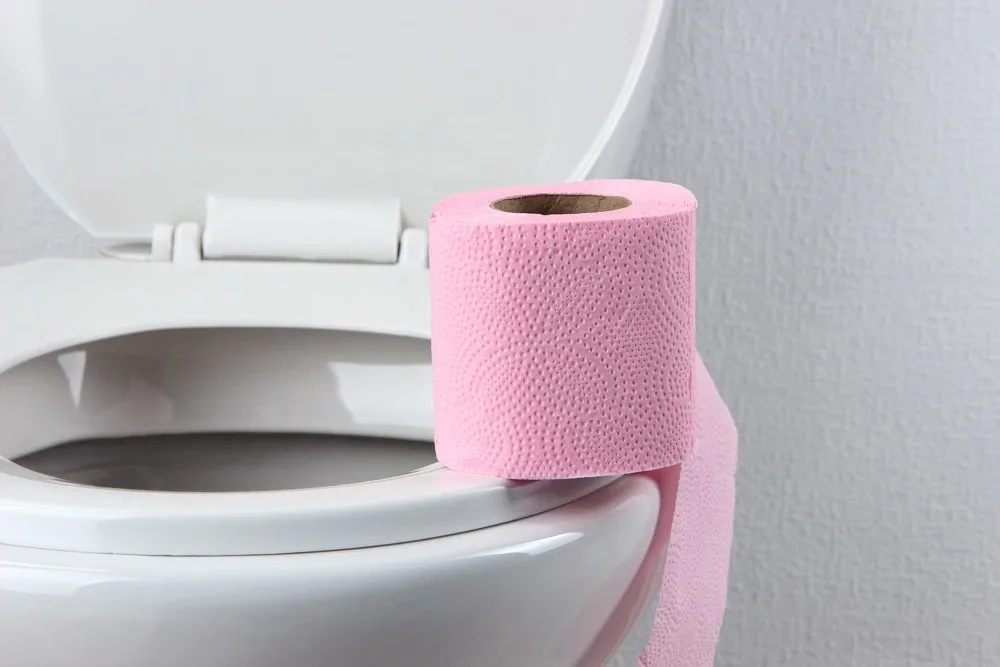
You’re lucky if you’re not familiar with Travelers’ Diarrhea. When you experience it for the first time, you’ll know it from the moment your stomach starts rumbling until the second you dash to the nearest toilet.
Travelers’ Diarrhea is typically caused by bacteria found in contaminated food and water, though it can also be caused by hygiene or lack thereof. It’s not necessarily that other countries are unclean, it’s more the differences in bacteria from your home country.
Travelers with Travelers’ Diarrhea can expect loose stool as well as unpleasant symptoms like stomach cramps, bloating, nausea, vomiting, gas, fatigue and fever. Sounds fun, right?
Although these symptoms are usually short-lived, they can continue for up to a week. In other words, Travelers’ Diarrhea can last just long enough to dampen your vacation fun.
Risky Destinations
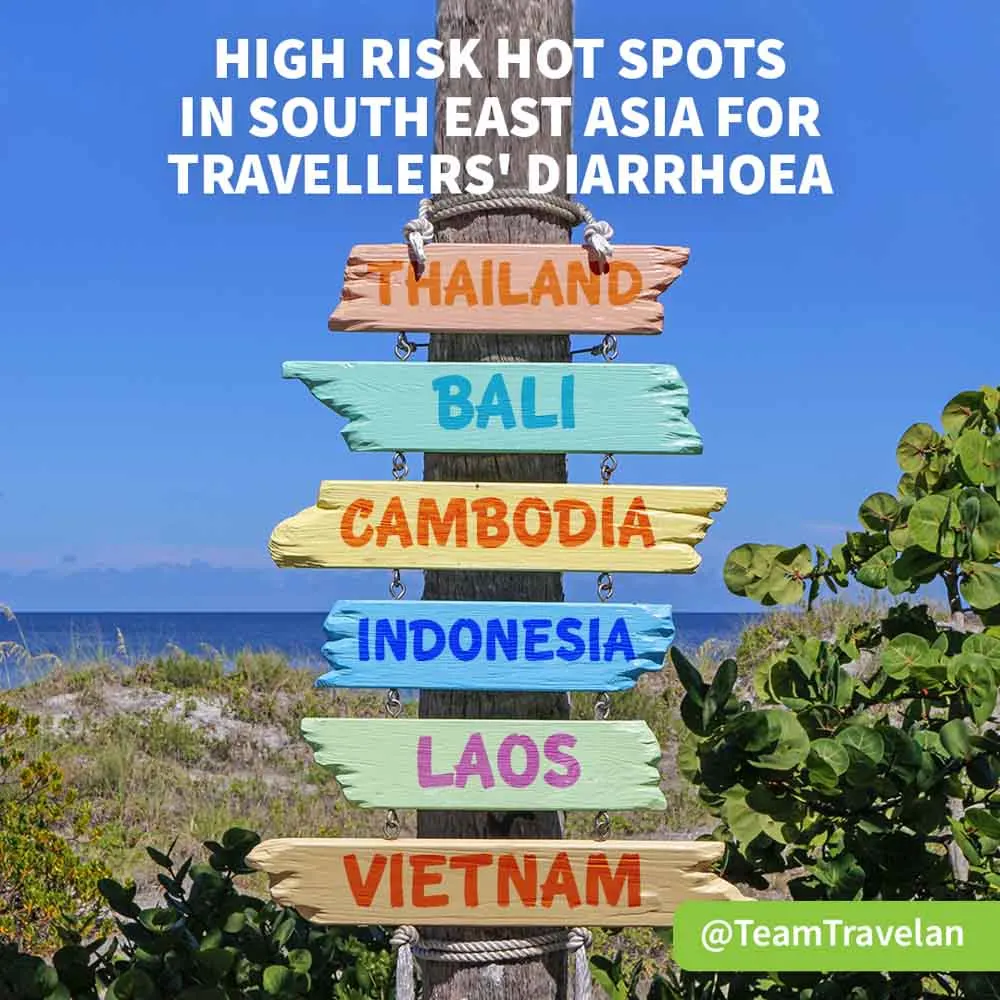
The Centers for Disease Control and Prevention (CDC) has separated global destinations into three groups based on risk. They consider Asia (except Japan), the Middle East, Africa (except South Africa), Mexico, Central America and South America to have the highest risk followed by Eastern Europe, South Africa and some Caribbean Islands in the intermediate-risk category.
According to its website, the CDC has the least concern for the following low-risk destinations: United States, Canada, New Zealand, Japan, Northern Europe and Western Europe. However, as previously noted, we’ve had issues even while traveling in low-risk countries like Sweden and France.
Tips for Preventing Travelers Diarrhea
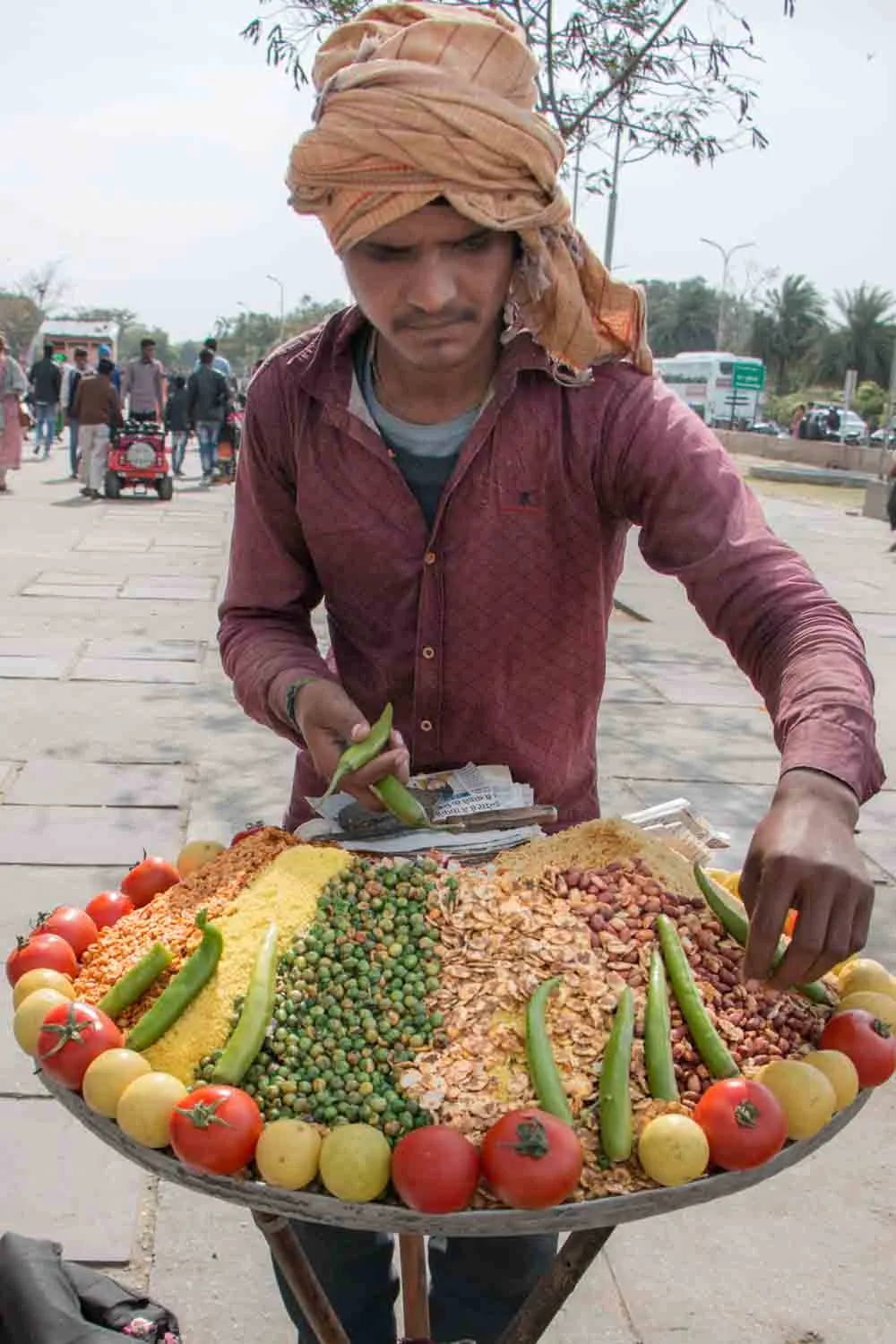
As Ben Franklin said over 200 years ago, an ounce of prevention is worth a pound of cure. This philosophy fits many aspects of life including the prevention of Travelers Diarrhea.
When we travel, we are super careful about the water we drink and the food we eat. This doesn’t mean that we avoid street food. On the contrary, we often feel more comfortable with street food since we can easily see the cleanliness of the cooking conditions and freshness of the food.
True Story
One of us (Mindi again) suffered food poisoning at home in Philadelphia after dining at one of the city’s finest restaurants. This is an example that hygiene issues can happen anywhere – all it takes is one sick employee not washing hands while working in the kitchen. She also got food poisoning from a shrimp burrito in San Diego, but that’s another story.
Based on our experiences traveling in over 40 countries (so far), we offer the following tips for preventing Travelers’ Diarrhea while traveling:
Even if you follow all of our tips, you can still suffer from Travelers’ Diarrhea. For this reason, we also recommend that you plan ahead and pack Travelan for your trip.
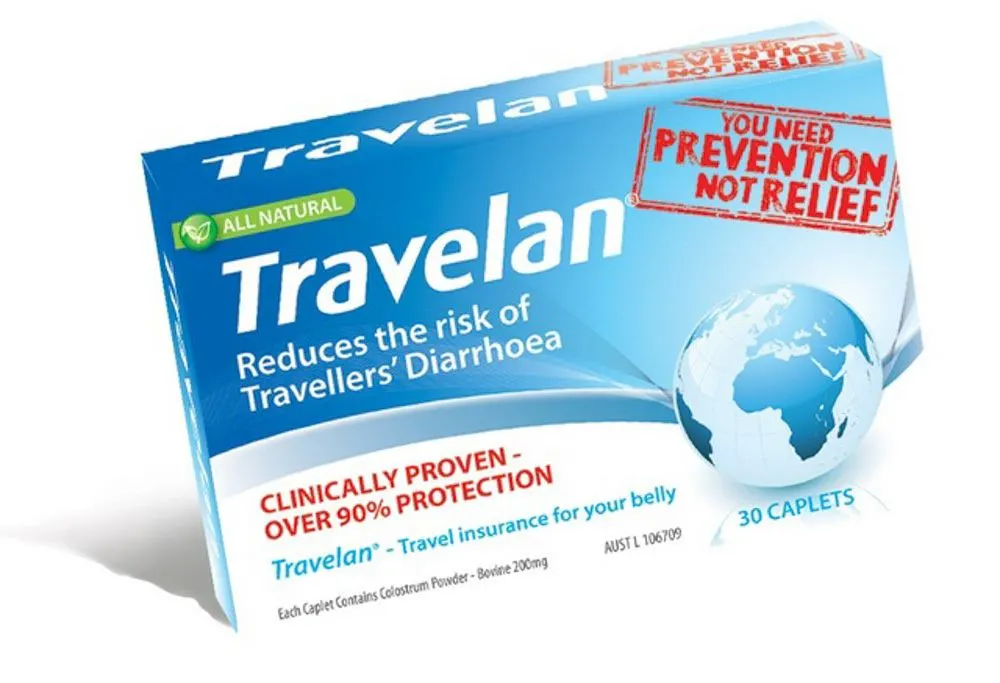
For the unfamiliar, Travelan prevents diarrhea before it happens and doesn’t require a prescription. Australians can buy Travelan over the counter at pharmacies across the country. In the US, shoppers can buy Travelan at Passport Health and through Amazon. A packet of 30 caplets lasts for ten days and costs $30.
The active ingredient is completely natural, made from cows colostrum enriched with E.coli antibodies. Recent studies by the US Department of Defense demonstrated cross-reactivity to Campylobacter, Salmonella and Shigella bacteria. Travelan prevents and fights nasty bacteria when taken in advance.
You just need to take a caplet before each meal with bottled water. Travelan then lays in wait within your digestive system, ready to fight any diarrhea-causing bacteria.
Travelan literally neutralizes bacteria before they establish themselves as residents in your GI tract preventing you from getting sick.
How to Treat Travelers Diarrhea
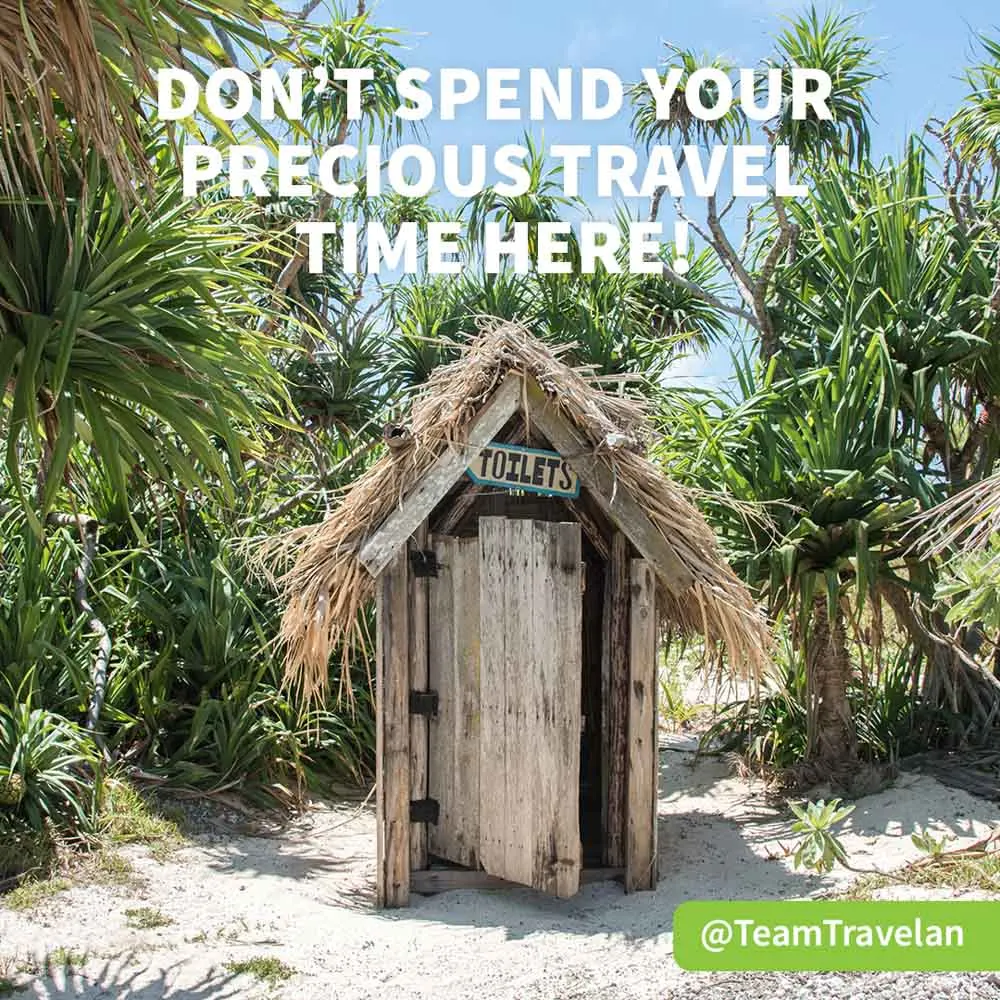
If you follow our preventative tips, Travelers’ Diarrhea hopefully won’t be an issue. However, when and if it occurs, here are some tips to help salvage your vacation:
Travelers’ Diarrhea happens to all food travelers at one time or another. The keys are to be diligent with preventative measures, pack Travelan and take care of yourself when you’re ill.

About the Authors
Daryl and Mindi Hirsch
Saveur Magazine’s BEST TRAVEL BLOG award winners Daryl and Mindi Hirsch share their culinary travel experiences and recipes on the 2foodtrippers website. Since launching the site in 2012, they’ve traveled to over 40 countries in their quest to bring readers a unique taste of the world.
Original Publication Date: December 15, 2018


